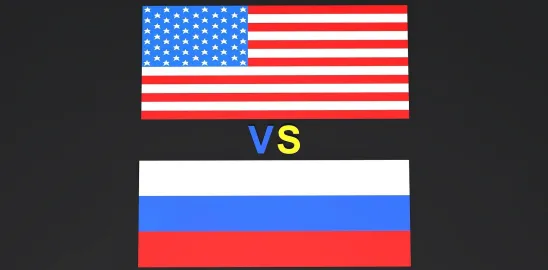Highlights
The U.S. has imposed a 200 percent tariff on Russian-origin aluminum articles and derivative aluminum articles, along with new reporting requirements for all aluminum imports
Starting April 1, the U.S. will impose increased tariffs on other Russian products including metals, chemicals, and minerals
As of April 10, the U.S. will impose a 200 percent tariff on aluminum or derivative aluminum articles, from any country, where any amount of primary aluminum used in the manufacture of the articles is smelted or cast in Russia
To mark the one-year anniversary of the Russian invasion of Ukraine, the U.S. government announced an expansion of trade and economic restrictions on Russia and Belarus. The actions include increased economic sanctions, expanded export controls and new tariffs.
U.S. businesses sourcing Russian-origin aluminum articles and other products should carefully review the proclamations and accompanying annexes to determine if their imported merchandise is subject to the tariffs.
Tariffs on Russian Aluminum and Products Incorporating Russia-Sourced Aluminum
On Feb. 24, President Joe Biden issued a proclamation to impose 200 percent Section 232 tariffs on imports into the United States of Russian-origin aluminum and certain aluminum derivative articles and articles containing Russian-origin aluminum. The tariffs are occurring in two phases:
- Effective March 10, 2023, 200 percent tariffs apply to imports of aluminum and derivative aluminum articles that are produced in Russia
- Effective April 10, 2023, 200 percent tariffs will apply to imports of aluminum or derivative aluminum articles, regardless of origin, for any article containing any amount of primary aluminum that is smelted or cast in Russia
- “Primary aluminum” means new aluminum metal that is produced from alumina (or aluminum oxide) by the electrolytic Hall-Héroult process
To implement the April 10 tariffs, U.S. Customs and Border Protection (CBP) will require U.S. importers of all aluminum articles and aluminum derivative articles from all countries to report the following country code information on the entry summary forms:
- Primary Country of Smelt
- The country where the largest volume of new aluminum metal is produced from alumina (or aluminum oxide) by the electrolytic Hall-Héroult process
- Secondary Country of Smelt
- The country where the second largest volume of new aluminum metal is produced from alumina (or aluminum oxide) by the electrolytic Hall-Héroult process
- Country of Cast
- The country where the aluminum (with or without alloying elements) was last liquefied by heat and cast into a solid state
To allow the trade community additional time to prepare, CBP will implement the smelt and cast reporting requirements on May 10. The smelt and cast reporting requirements apply even if the smelting or casting occurs in a country other than Russia. Moreover, aluminum and derivative aluminum articles have been spelled out in the Harmonized Tariff Schedule of the United States (HTSUS) as follows:
| Description | HTSUS Heading/Subheading |
| Unwrought aluminum | Heading 7601 |
| Bars, rods and profiles | Heading 7604 |
| Wire | Heading 7605 |
| Plates, sheets and strip | Heading 7606 |
| Foil | Heading 7607 |
| Tubes, pipes and tube or pipe fittings | Headings 7608 and 7609 |
| Castings and forgings of aluminum | Subheading 7616.99.51 |
Aluminum derivatives articles:
|
Description |
HTSUS Heading/Subheading |
|
Stranded wire, cables, plaited bands and the like, including slings and similar articles, of aluminum and with steel core, not electrically insulated; the foregoing fitted with fittings or made up into articles |
Subheading 7614.10.50 |
|
Stranded wire, cables, plaited bands and the like, including slings and similar articles, of aluminum and not with steel core, not electrically insulated; the foregoing comprising electrical conductors, not fitted with fittings or made up into articles |
Subheading 7614.90.20 |
|
Stranded wire, cables, plaited bands and the like, including slings and similar articles, of aluminum and not with steel core, not electrically insulated; the foregoing not comprising electrical conductors, not fitted with fittings or made up into articles |
Subheading 7614.90.40 |
|
Stranded wire, cables, plaited bands and the like, including slings and similar articles, of aluminum and not with steel core, not electrically insulated; the foregoing fitted with fittings or made up into articles |
Subheading 7614.90.50 |
|
Bumper stampings of aluminum, the foregoing comprising parts and accessories of the motor vehicles of heading 8701 to 8705 |
Subheading 8708.10.30 |
|
Body stampings of aluminum, for tractors suitable for agricultural use |
Subheading 8708.29.21 |
The proclamation further indicates that Russian aluminum articles imports are ineligible for any General Approved Exclusions, Bureau of Industry and Security approved importer-specific product exclusions, or any quota or tariff rate quota.
The proclamation also states that any country that imposes a 200 percent tariff or more on its imports of aluminum articles that are products of Russia may be exempt from the U.S. tariff.
Increased Tariffs Russian Metals, Chemicals, Minerals and Other Products
In addition to the aluminum tariffs, the president issued a proclamation to impose increased Column 2 tariffs on more than 100 Russian metals, minerals and chemical products worth approximately $2.8 billion to Russia. The increased tariffs will apply as of April 1, 2023.
The Column 2 duty rate applies to imports from countries with which the U.S. does not share Most Favored Nation treatment. On April 8, 2022, President Biden signed into law H.R. 7108, the Suspending Normal Trade Relations with Russia and Belarus Act, which suspended Most Favored Nation tariff treatment for Russia and Belarus and imposed the Column 2 duty rates on all products of Russia and Belarus.
Among other products, the Column 2 duty rate for the following Russian-origin products will increase to 35 percent for:
- Certain iron ores (subheading 2602.12)
- Certain chemicals in chapter 28
- Bumpers for motor vehicles (subheading 8708.10.30)
Among other products, the Column 2 duty rate for the following Russian-origin products will increase to 70 percent for:
- Certain ferroalloys (heading 7202)
- Steel and aluminum containers for compressed or liquefied gas (headings 7311 and 7613)
- Other metals (heading 8112)
Annex A to Proclamation 10523 contains a complete list of the HTSUS subheadings subject to the tariff increases.
Impact on U.S. Businesses
U.S. businesses should carefully review the recent proclamations and new requirements to ensure they are aware of how they apply to merchandise they import. For example, some Russian articles are subject to both the Section 232 tariff and Column 2 duty rate increases (e.g., bumpers for motor vehicles).
Furthermore, U.S. importers of aluminum and derivative aluminum articles will likely need to trace supply chains and understand the smelt and cast information to prepare for the upcoming reporting requirements. The reporting requirements apply to all aluminum articles and aluminum derivative articles from all countries. To avoid delays in importing, U.S. importers should ensure the required information and documentation are available at the time of entry.
The reporting requirements may also lead to increased CBP enforcement efforts and requests for supporting documentation or evidence to substantiate the smelt and cast declarations. A robust import compliance and recordkeeping program will help prepare U.S. importers for potential CBP inquiries.







 />i
/>i

